Operator assistance devices: Handy helpers
26 January 2021
Safety and efficiency are key drivers behind the development of crane operator assistance devices both for OEM crane companies and specialist manufacturers. Operator assistance can start at a very elemental level, such as with the actual design of the crane, and extends to the very latest control technology available.
Japanese crane manufacturer Tadano points out that operator assistance can start with basic machine design enhancements incorporated into new models. Tadano highlights, for example, how access to its crane cabs has been improved over the years. Simple design features such as access ladders, larger windows, the reduction of blind spots, the use of side-view and rear-view cameras, and the implementation of a tiltable cab across all the lines, can have a big impact on assisting the crane operator, it claims.
Standardisation
Wisconsin, USA-headquartered crane manufacturer Manitowoc says that the standardisation of its crane controls via its common control system (Crane Control System, aka CCS) is a form of operator assistance. The CCS has also been embedded into the simulators it uses for operator training so that users become familiar with its systems from early on. “With the CCS, regardless of which model you’re talking about, control inputs are very similar,” explained John Alexander, director of service, training and telematics at Manitowoc. “This allows an operator to run one of our all terrain cranes and then jump into a rough terrain crane and have the same functionality, feel, and control inputs.
“It’s critical to have well-trained operators in the seats of newer cranes and the more standardisation there is across models, the easier that becomes.”
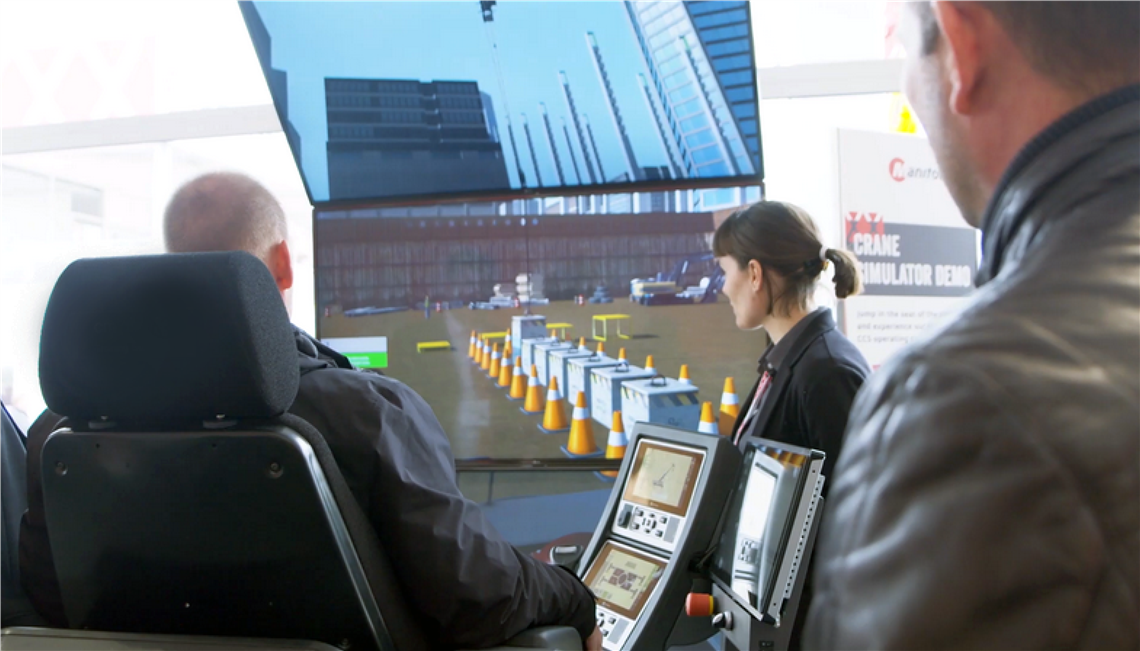 Manitowoc embeds CCS into its training simulators
Manitowoc embeds CCS into its training simulators
Since its acquisition of Demag, Japanese crane manufacturer Tadano is in the interesting position of integrating another OEM’s operator assistance devices into its portfolio. “Tadano is a little more than a year beyond the integration of the Demag product line into the group, which built the foundation to more efficient product development,” says Michael Klein, manager product marketing for Tadano and Demag mobile cranes.
Customer input
The solution to progress, the company claims, is through internal co-operation combined with listening to its customers. “The product development teams are working together to increase the speed of the development and introduction cycles for our customers,” Klein explains. “Customer input, especially during the product development cycle, is playing an increasingly important part of the development of operator assistance devices.”
US crane manufacturer Link-Belt also says that listening to customers is key to developing new operator assistance devices. It also notes the influence advances in software, systems, mechanical technologies, plus regulations have had on the development of the sector.
According to Pat Collins, director of product marketing at Link-Belt, the operator assistance device industry seems to be heading towards developing products that continuously place the operator in a lockout situation, warning that sophistication in these devices can be overdone. “We look for balance in our crane design,” he explains. “Some of these cranes are being bare rented with a different operator each time it goes out and some are going out with a dedicated operator – so you want some things to be second nature. We have systems in place like swing alarm and display of next five degrees of radius in our Pulse 2.0 display, but sophistication can be overdone. We opened a new training facility in 2015 and have had high numbers of customer and distributor technicians come through for training. We believe it is important for operation to remain intuitive, just because you can relocate a switch to a touchscreen doesn’t mean you necessarily should.”
Klein at Tadano also has other concerns relating to possible overreliance on technology. “Our product development teams are proactively thinking about the effect of potential malfunctions on assistance devices,” says Klein. “They consider what happens if things do not work as intended. These assistance systems are helpful to the operator, but a malfunction can cause an issue, especially if the operator does not immediately notice.”
Despite these anxieties, technology has had a big impact in a short time on the world of operator assistance devices. For Link-Belt, its tech-ladened Pulse 2.0 and Variable Confined Area Lifting Capacities (V-Calc) operator aids demonstrate this. Pulse 2.0 includes operator presets, such as fine metering when lifting, while V-Calc has 81 outrigger configurations with real time 360-degree charts. V-Calc was proven initially on the 75|RT rough terrain crane and has since been developed and implemented into recent product launches including 100|RT, 120|RT, 175|AT and, for the first time on a telescopic crawler, the TCC-800.
Link-Belt’s most recent operator assistance addition is the SmartFly system that integrates new fly erection and storage technology for sequencing. It also reduces working at height. It comprises a fly assist cylinder, boom head speed screws, colour-coded spring-loaded latches, a patented interlocking system and ground level boom controls (rough terrain cranes only) and can be operated by one person. Link-Belt formally patented this technology in 2020 and is beginning to roll it out across its telescopic crawler (TCC-800), rough terrain (100|RT, 120|RT), all terrain (175|AT) and hydraulic truck (HTC-86110) crane products.
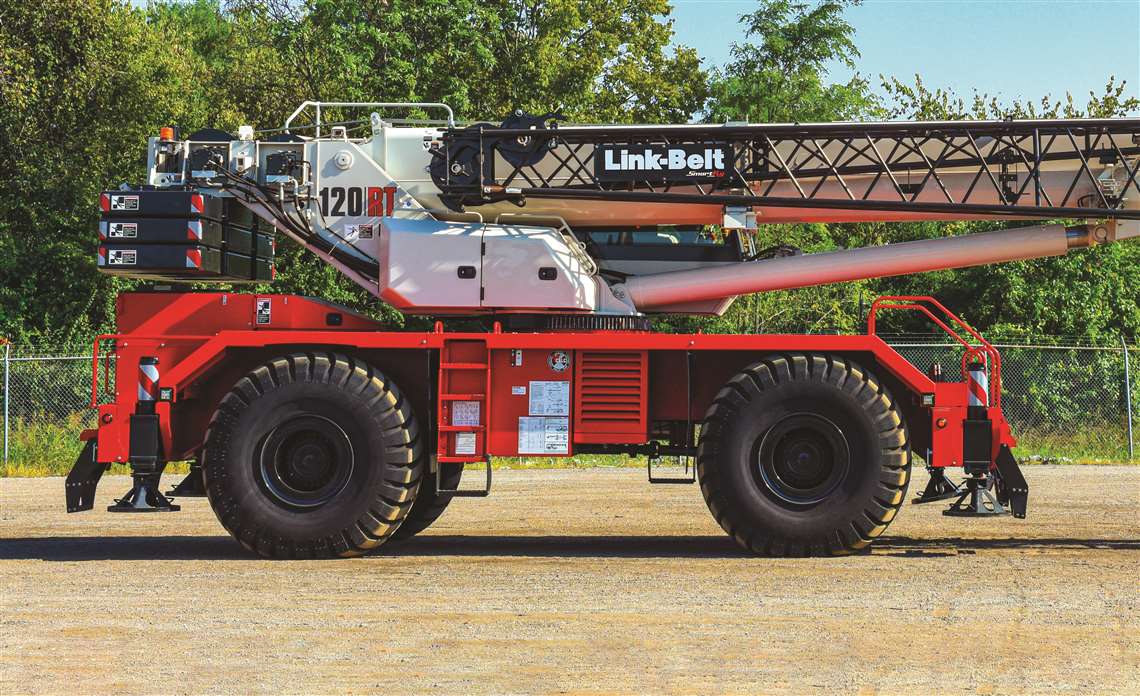 Link-Belt is rolling out SmartFly across its TCC-800, 100|RT, 120|RT, 175|AT and HTC-86110 product groups
Link-Belt is rolling out SmartFly across its TCC-800, 100|RT, 120|RT, 175|AT and HTC-86110 product groups
Switzerland-headquartered crane OEM Liebherr offers a number of assistance devices, including a Boom Up-and-Down Aid, a Ground Pressure Visualization tool, and remote drive.
The Boom Up-and-Down Aid is designed to stop cranes from tipping when lowering the boom. It indicates the approach to the tipping border and automatically stops operation before the operator unintentionally enters an unsafe zone. The crane is fitted with wind sensors on the main boom and jib. Both the measured wind speed and the actual crane configuration (boom length, boom angle) are taken into consideration when calculating the crane’s situation. When the conditions become too dangerous the system gives a warning. A video of the Boom Up-and-Down Aid can be seen here.
Liebherr’s Ground Pressure Visualization tool for crawler cranes calculates the current ground pressure of the machine in real time and compares it with the specified safety limits of the relevant position. The ground pressure is displayed in the operator’s cab and the operator is aware of whether the machine is situated in, or is approaching, a critical area. Dangerous work stages can so be avoided or adapted in good time. A video of the Ground Pressure Visualization system can be seen here.
Liebherr’s Liccon2 control system incorporates a RemoteDrive function, enabling the crane chassis to be controlled by remote control. German crane - rental house Salgert took delivery of the first Liebherr LTC 1050-3.1 compact cranes with RemoteDrive. According to Liebherr, the concept of manoeuvring using the remote control has now proven itself in practice in very constricted conditions in a production building of a specialist aluminium die-casting company in Bad Münstereifel.
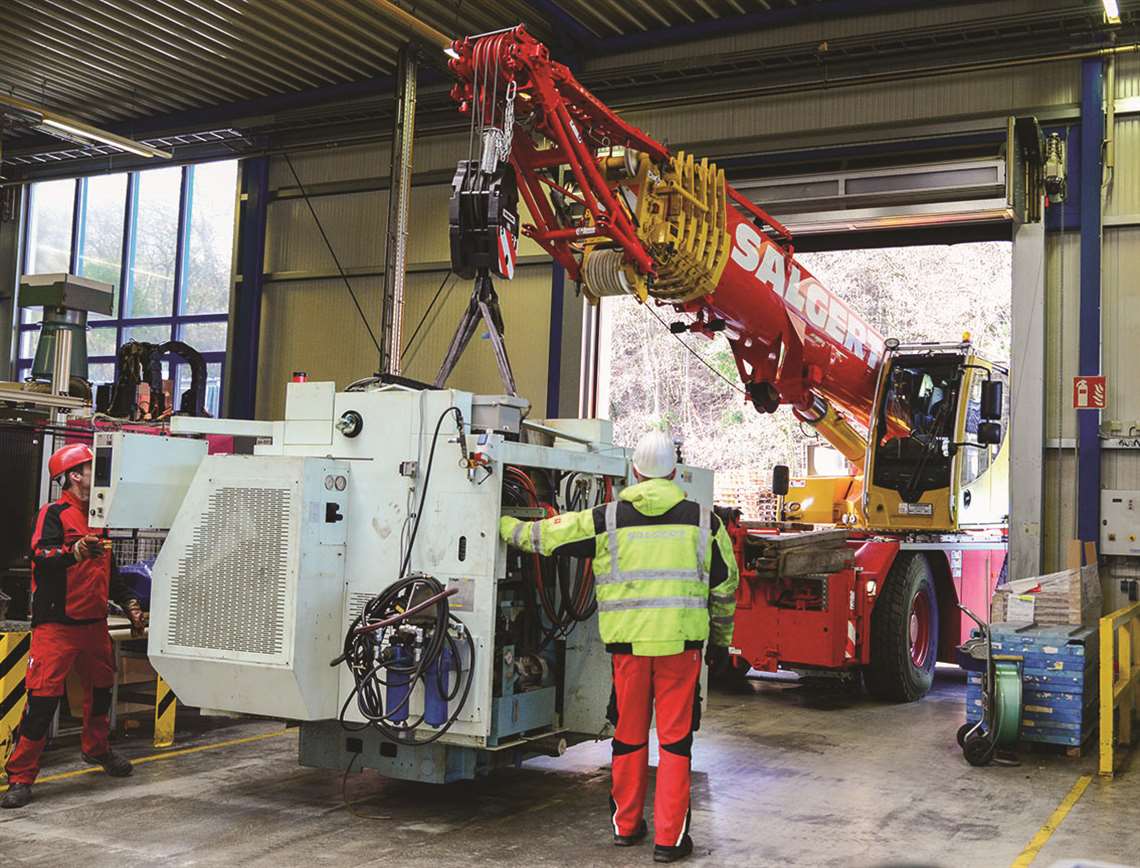 Salgert using the RemoteDrive function on its Liebherr LTC 1050-3.1
Salgert using the RemoteDrive function on its Liebherr LTC 1050-3.1
Specialist services
In addition to the efforts of OEMs there is a plethora of specialists out there furthering the assistance available to operators. Being independents, these companies are free to explore or specialise in areas that might not be viable for OEMs. Keep an eye on our Equipment and Accessories pages in subsequent issues for examples of these types of operator assistance devices.
French job site safety specialist AMCS Technologies, for example, produces an anti-collision and zoning system, the DCS 61-S, designed to maintain safe distances between cranes, automatically stopping them if they get too close to each other. The company reports that, following the success of the DCS 61-S in France, it is now launching the system internationally. It has also expanded its assistance portfolio with the launch of a new telematics system called IoT Lifting. The company claims IoT Lifting enables crane fleet managers to remotely monitor site productivity in real time, record crane activity, and conduct remote diagnostics.
AMCS observes that, in certain countries, some companies are using its anti-collision system in passive mode (where the crane operator only receives a visual alert on his screen and a sound alert). AMCS recommends that because the primary purpose of its system is to avoid collisions, it should always be used in active mode to slow down and stop the movement of the crane automatically before a collision happens. This is particularly important, says AMCS, because the level of knowledge among crane operators regarding anti-collision systems can vary widely and companies can make decisions that are not always well founded.
So it seems no matter how advanced today’s technology, human error can still currently play a part in undermining the effectiveness of assistance devices. But what can we expect in the future? German manufacturer of future-proof control solutions for mobile machines, Wika Mobile Control, believes the demand for functionally safe operator assistance systems will increase, noting how operator assistance devices have increasingly developed into intervention control systems. As soon as the safety of man, machine and material is at risk, the company argues, regulatory systems must intervene to defuse the situation as systems stop assisting and start protecting.
Another German company, mobile and intelligent camera systems specialist Motec, says it is developing digital technology that uses new image processing algorithms. These ‘smart cameras’ could be used to further increase the efficiency of construction projects in ways that are not even considered now, the company claims. Although no one can accurately predict the future, one thing is for certain: it looks exciting.
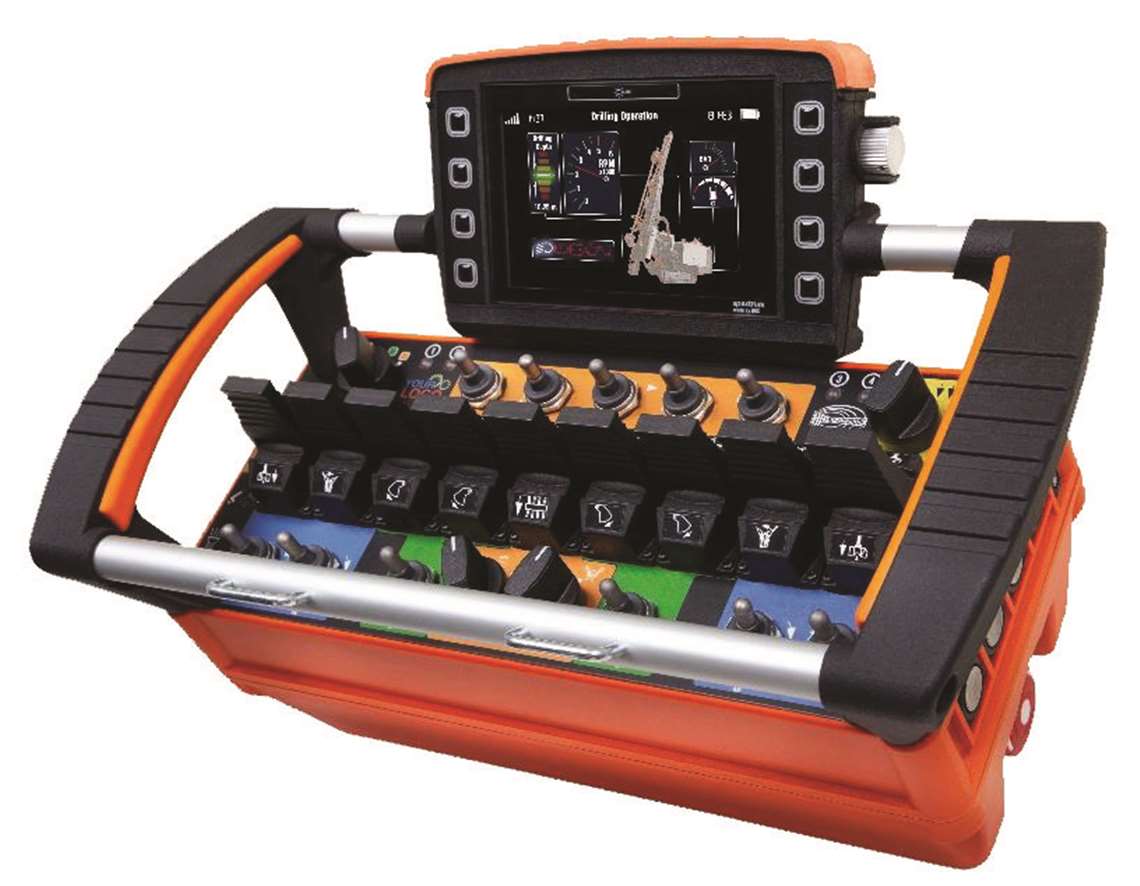 The spectrum L is part of HBC-radiomatic’s new transmitter series with a five-inch (125 mm) colour display The spectrum L is part of HBC-radiomatic’s new transmitter series with a five-inch (125 mm) colour display
Germany-based radio remote controls specialist HBC-radiomatic has launched its latest Spectrum transmitter generation with a new five-inch (125 mm) colour display. The company says the larger display allows for the clear and well-structured arrangement of even more information and offers access to a comprehensive library containing commonly used images and symbols for the customised screen configuration. |
|
Anti-Covid whistle alternative 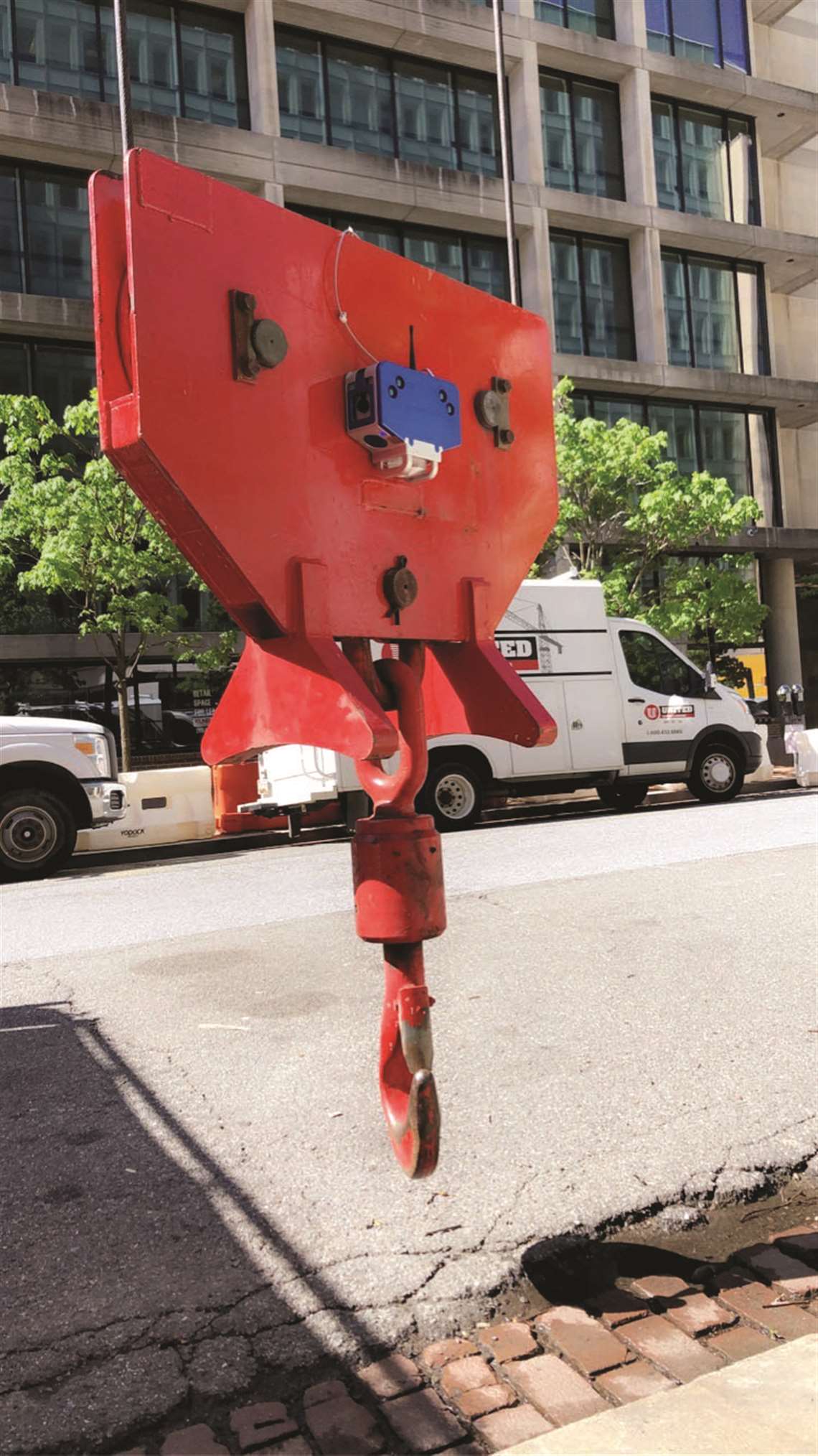
With jobsite managers around the world looking to minimise the continued threat of Covid 19, the BlokAlert system from Hull, UK-headquartered company BlokCorp offers a hygienic alternative solution to construction workers having to physically blow whistles, or to using air horns with their associated waste and ongoing costs. BlokAlert is a wireless, audio-visual warning system that can be quickly and easily deployed to the hook block of a crane. When activated by the lifting crew, the BlokAlert receiver gives out a recognisable audio-visual signal that can be seen and heard by site personnel in proximity to the hook block or load. This forewarns the workforce to the position and movements of the hook block, increases awareness and reduces the risk of being struck by the crane’s hook block, lifting accessories or load. |




